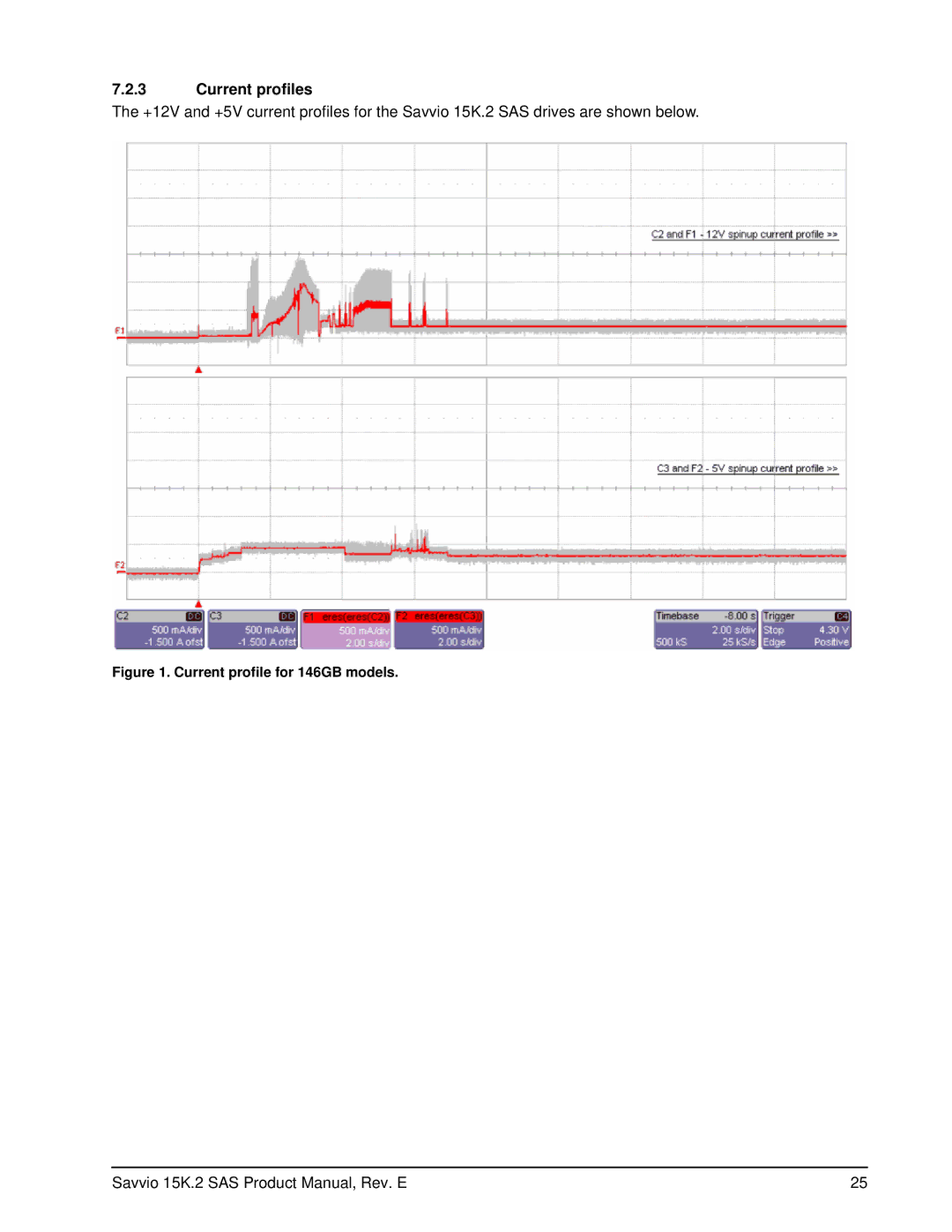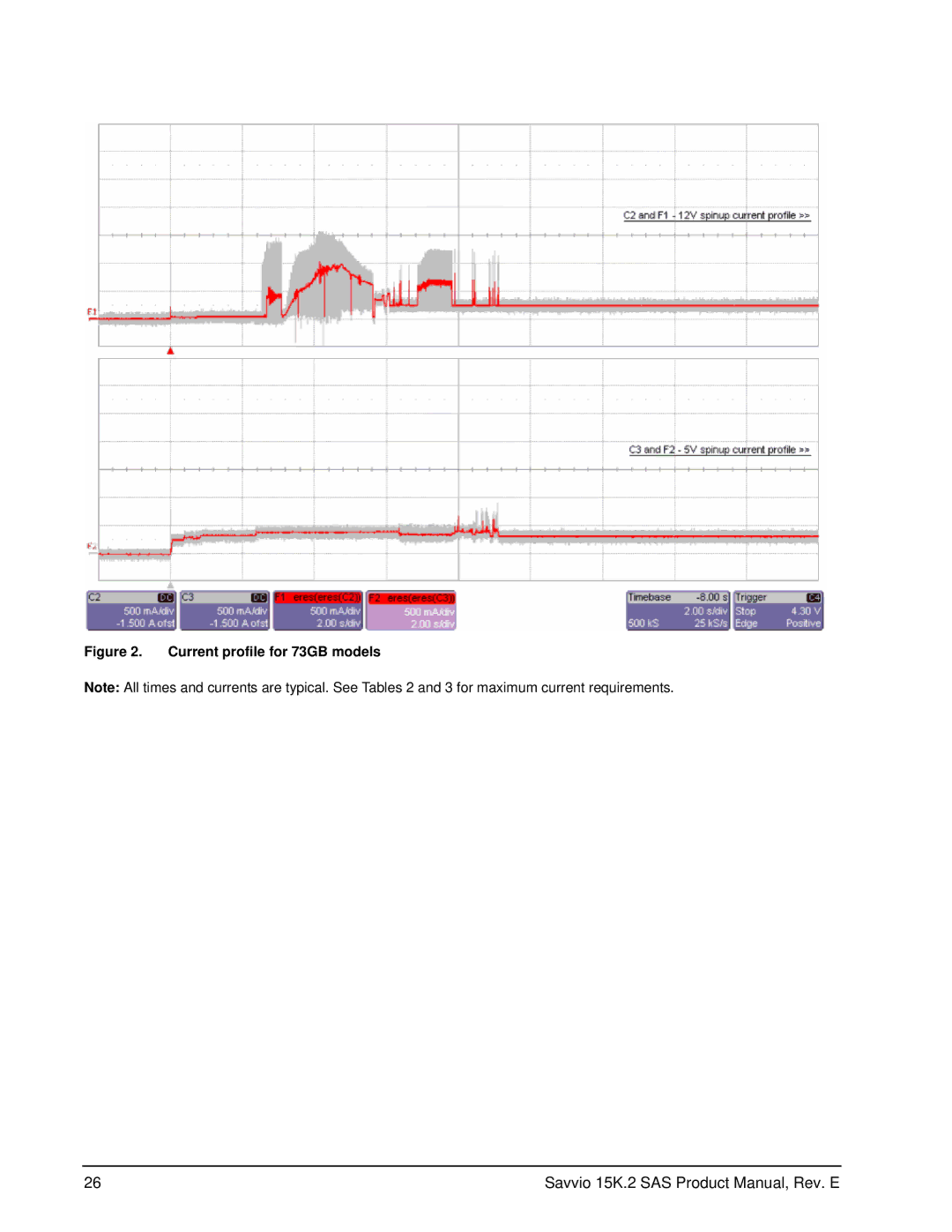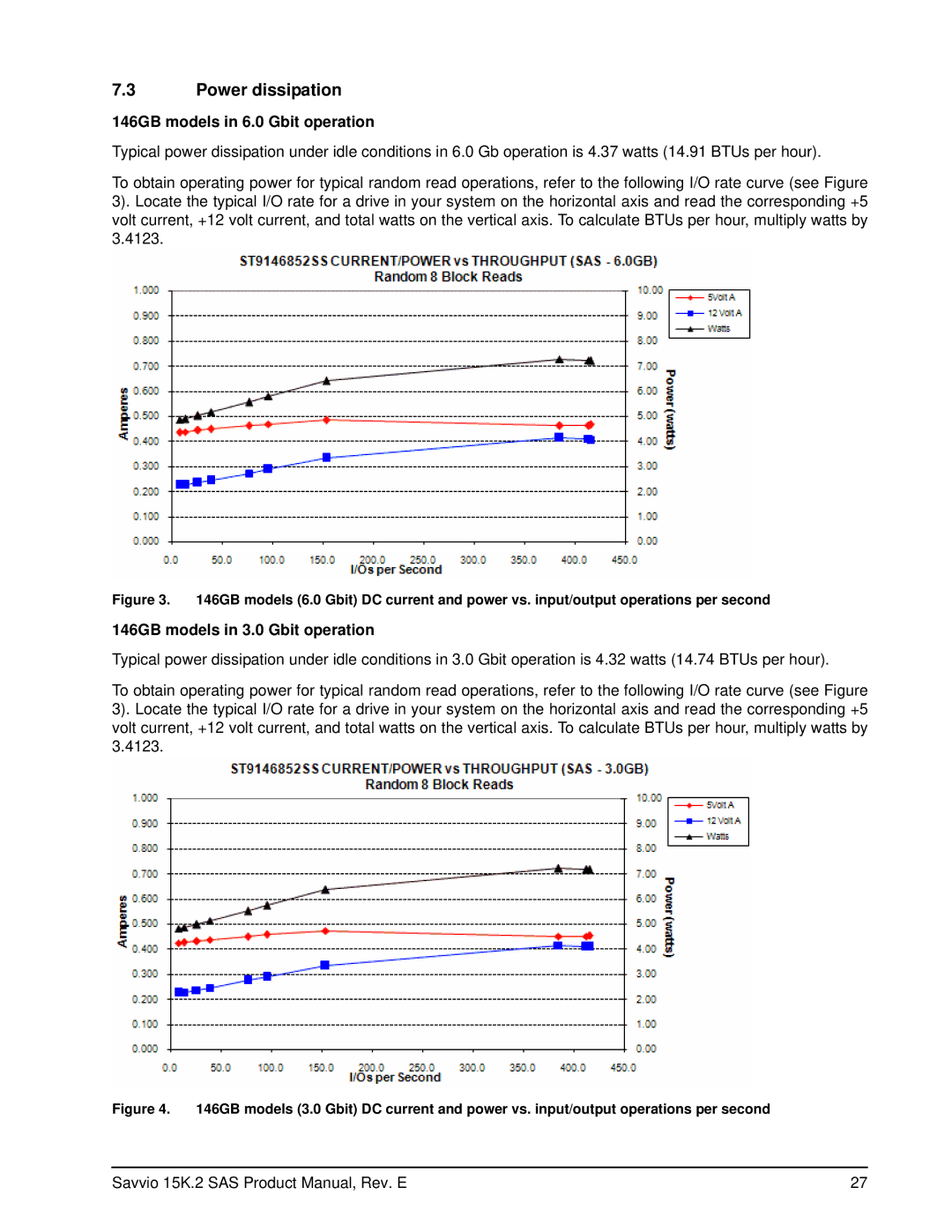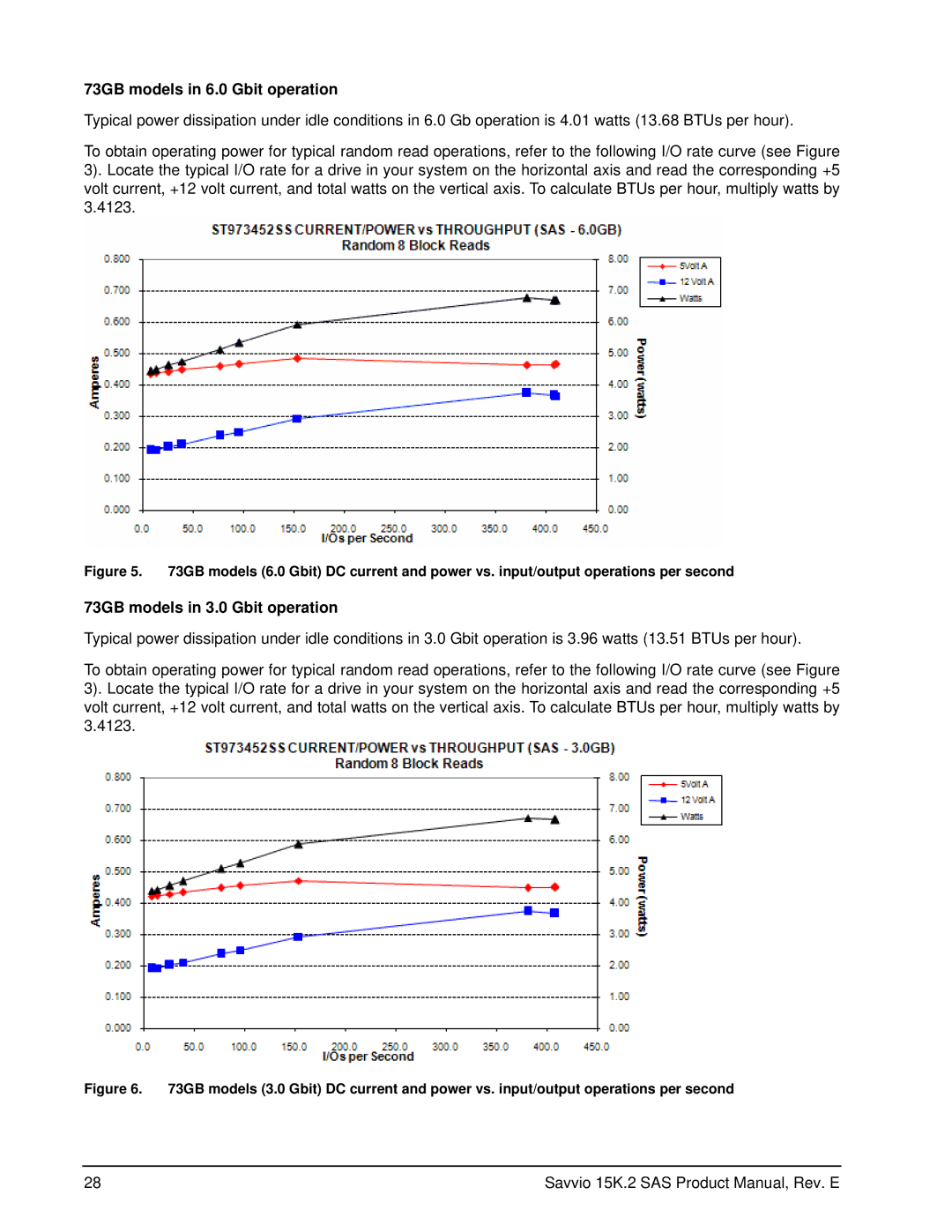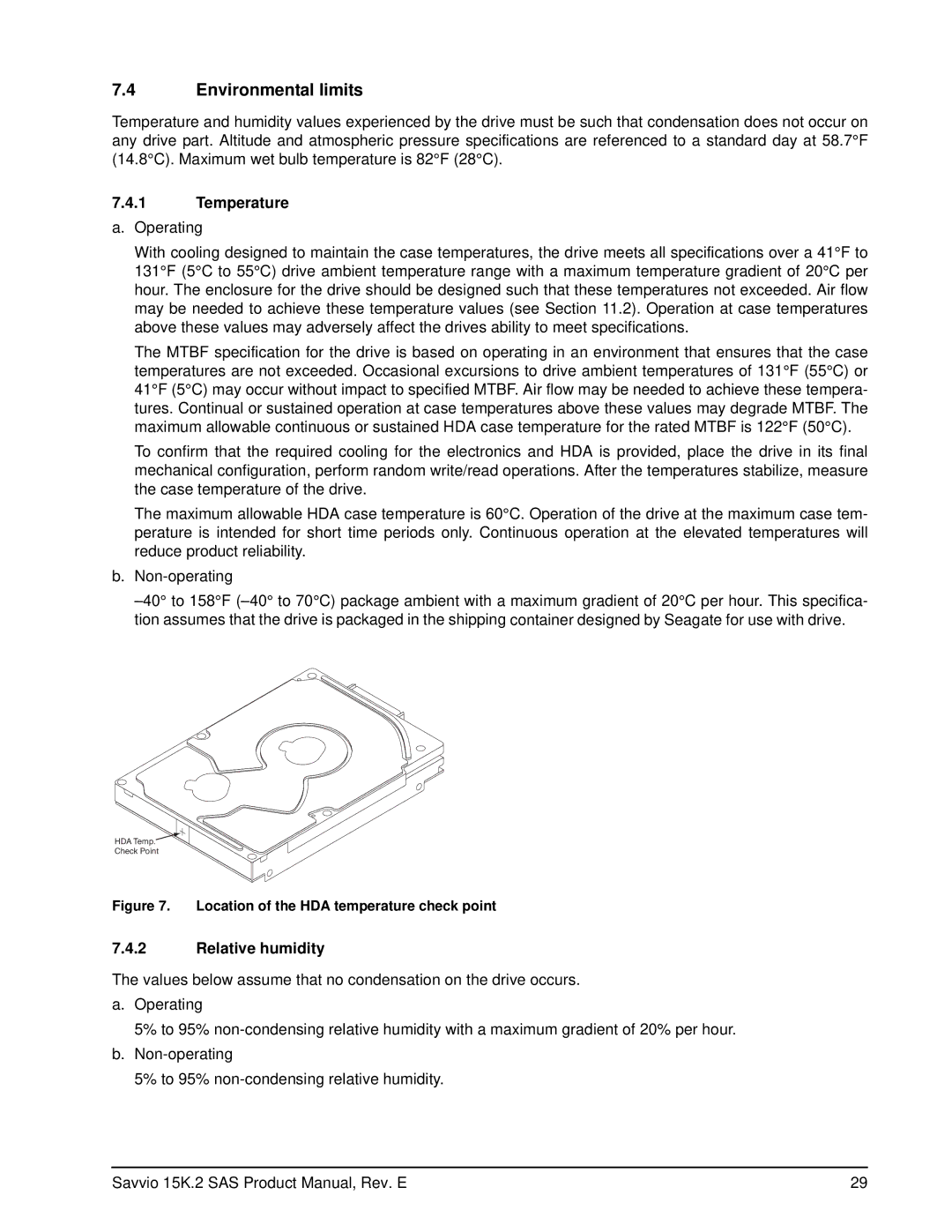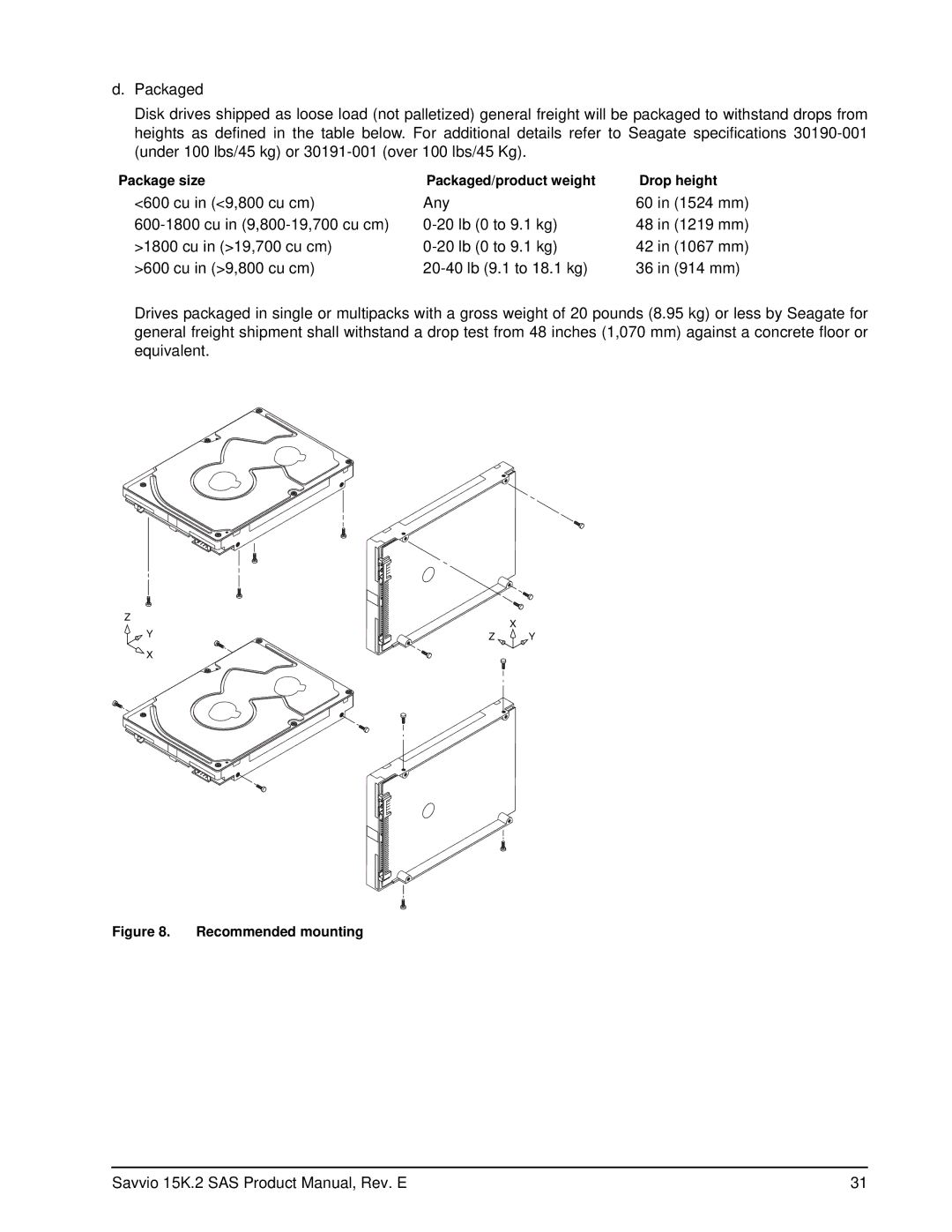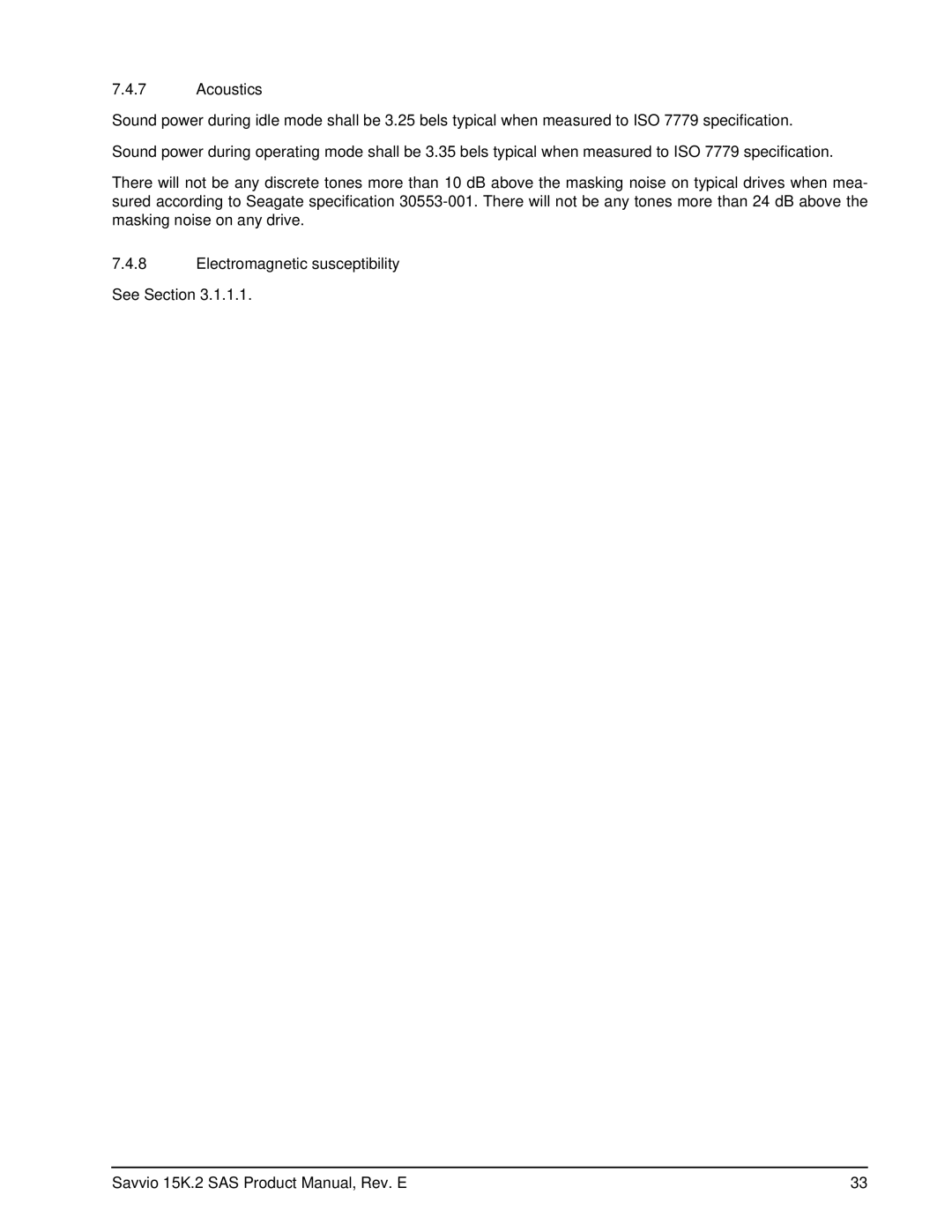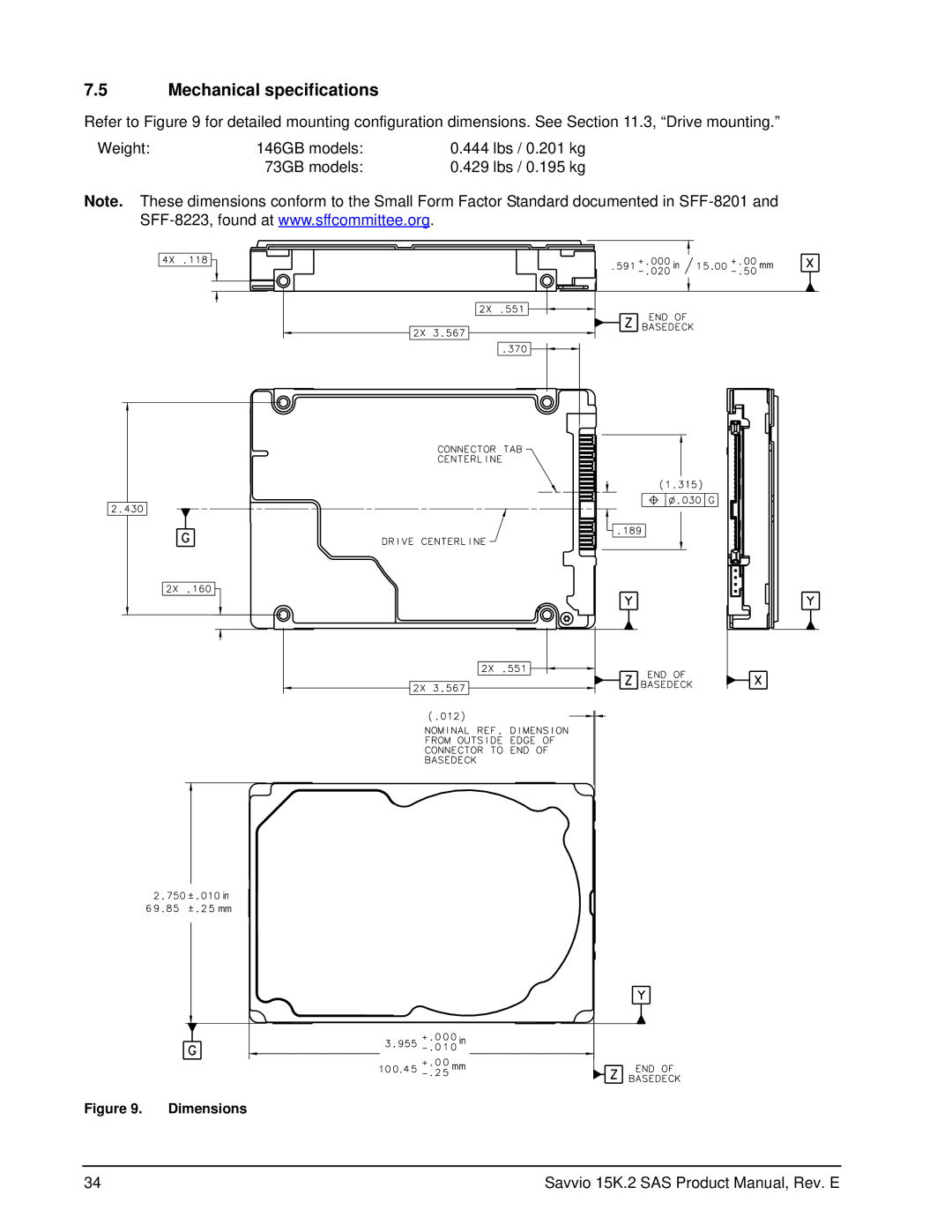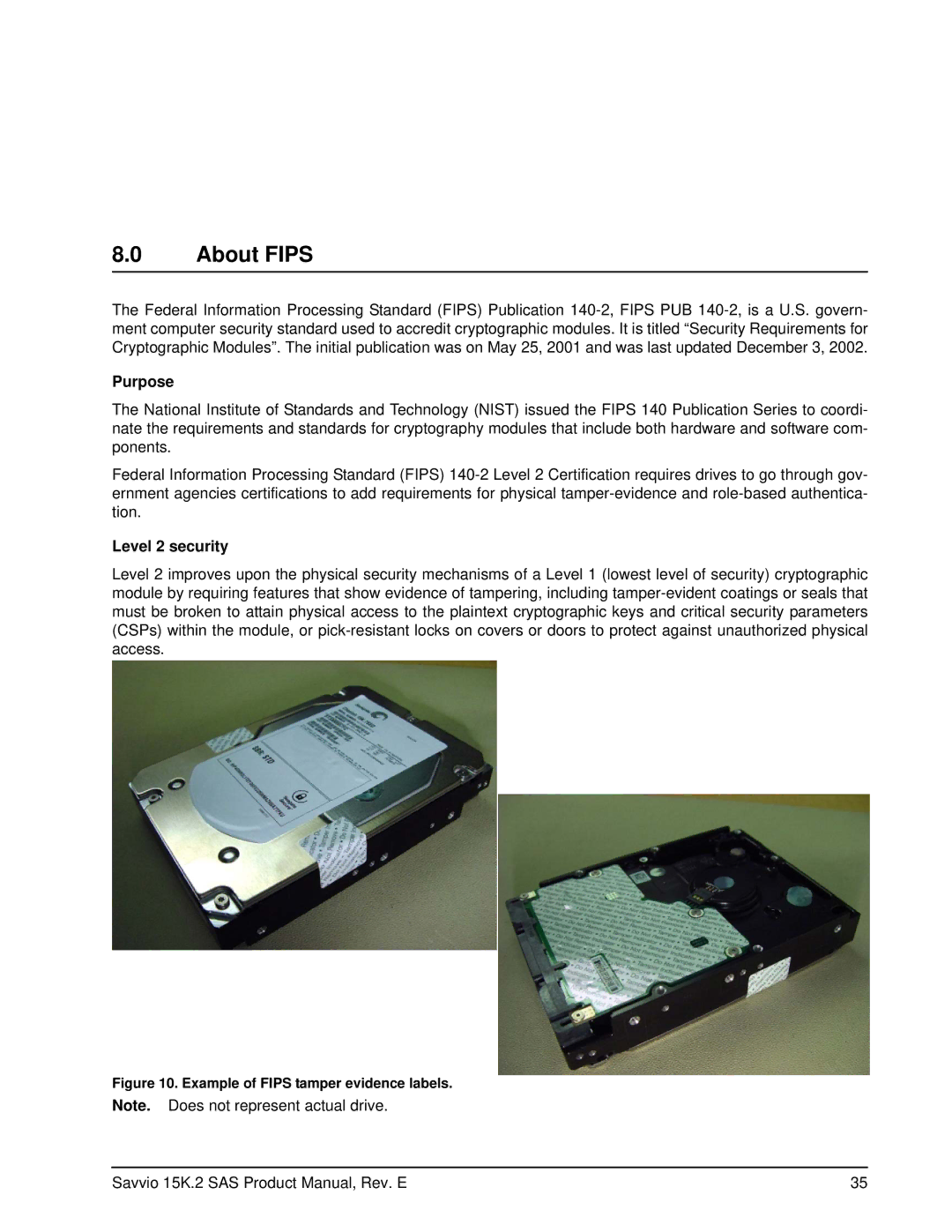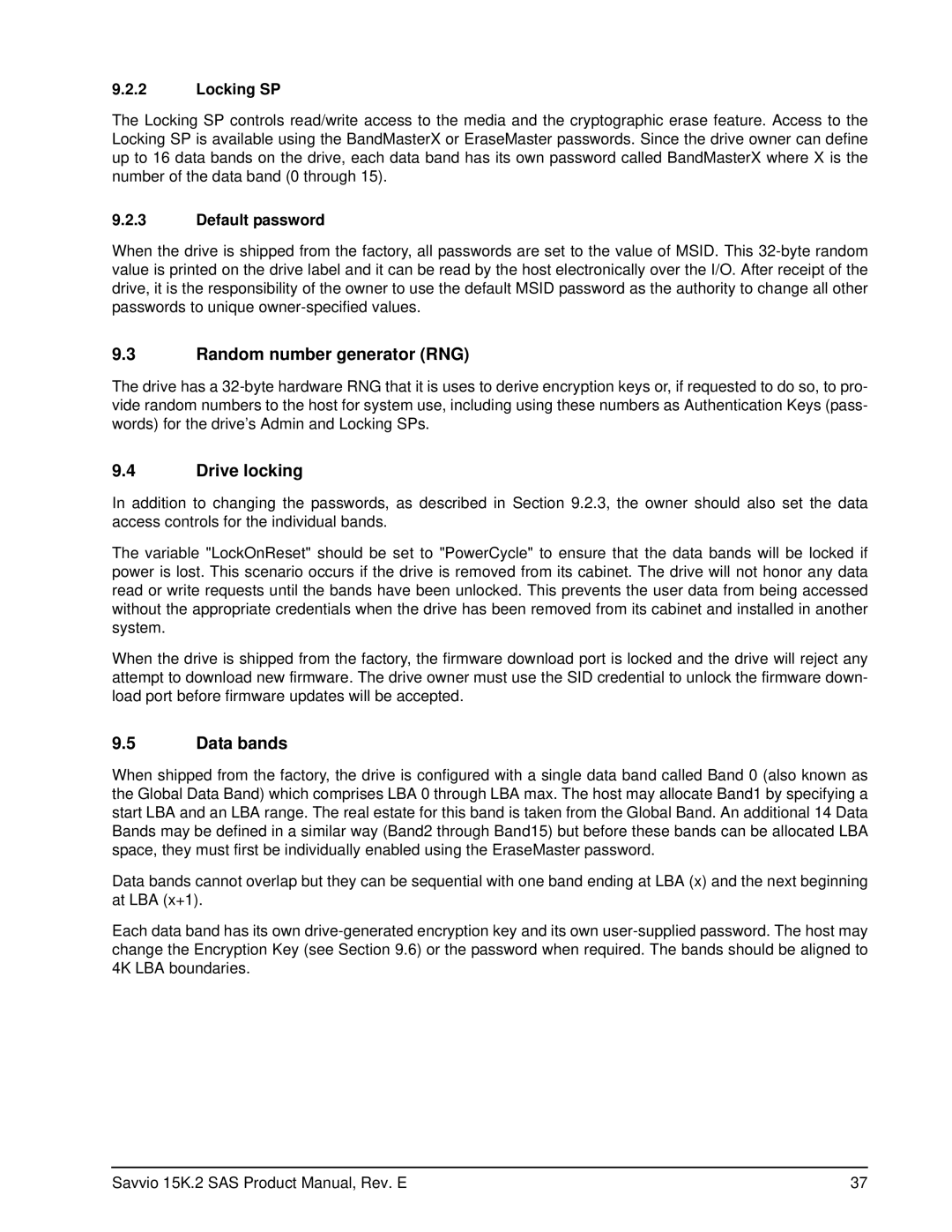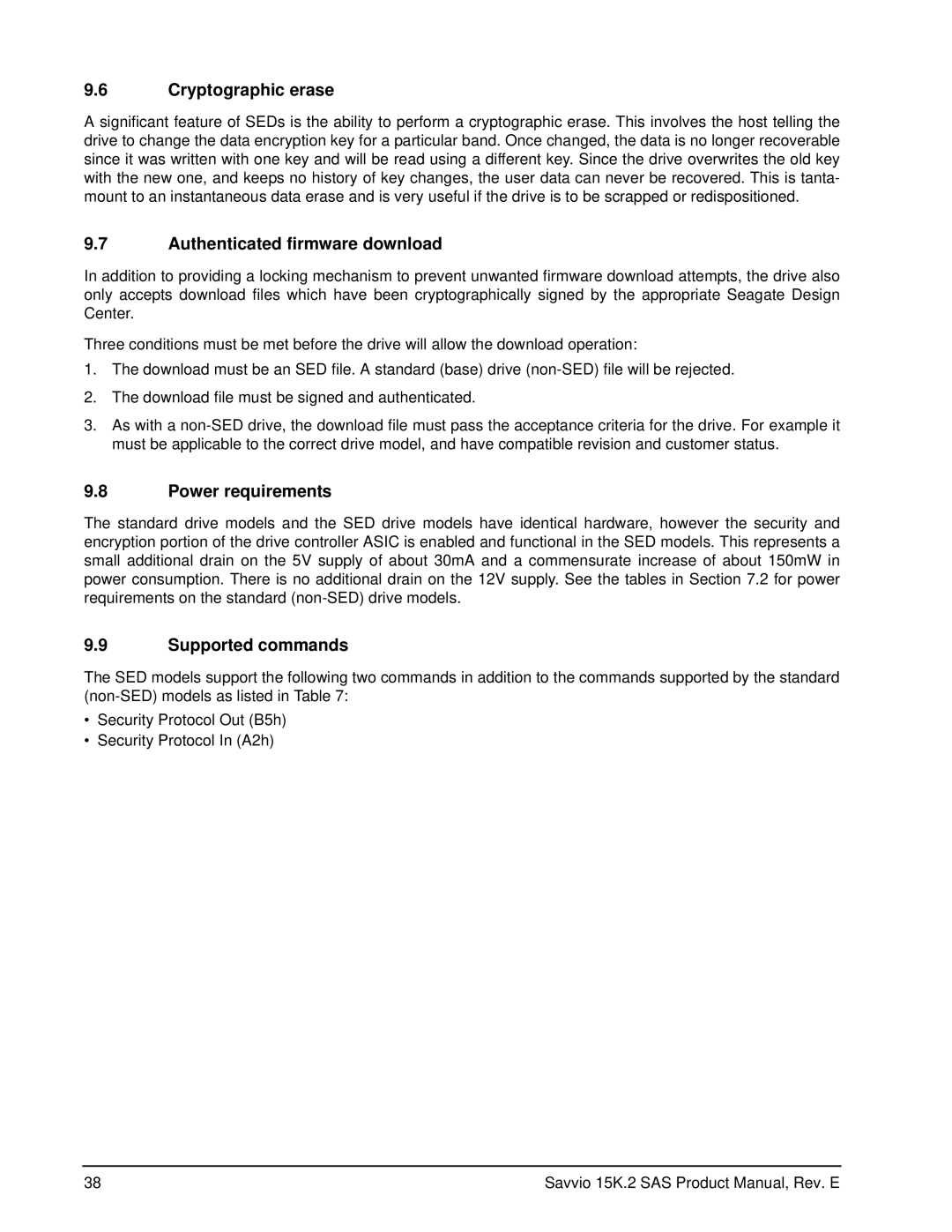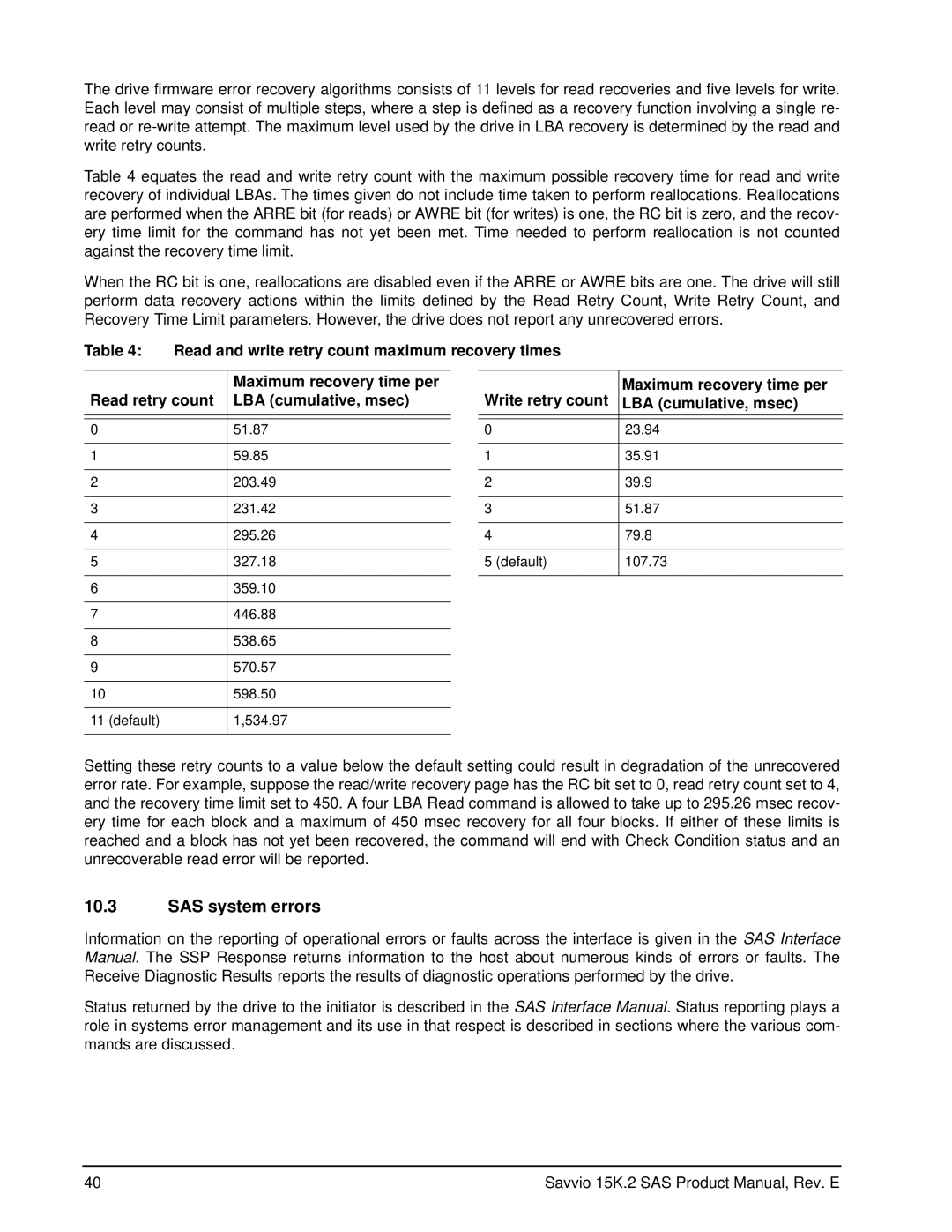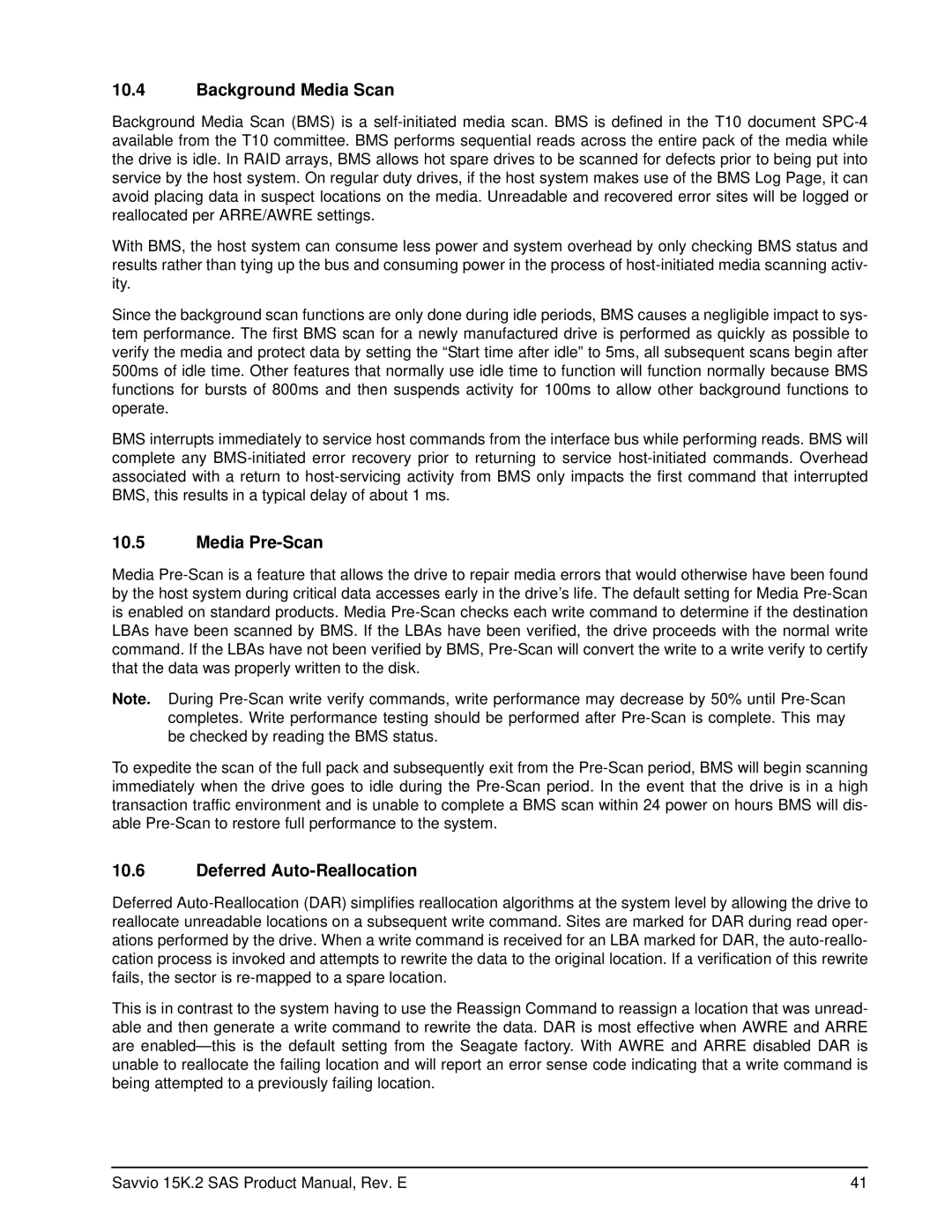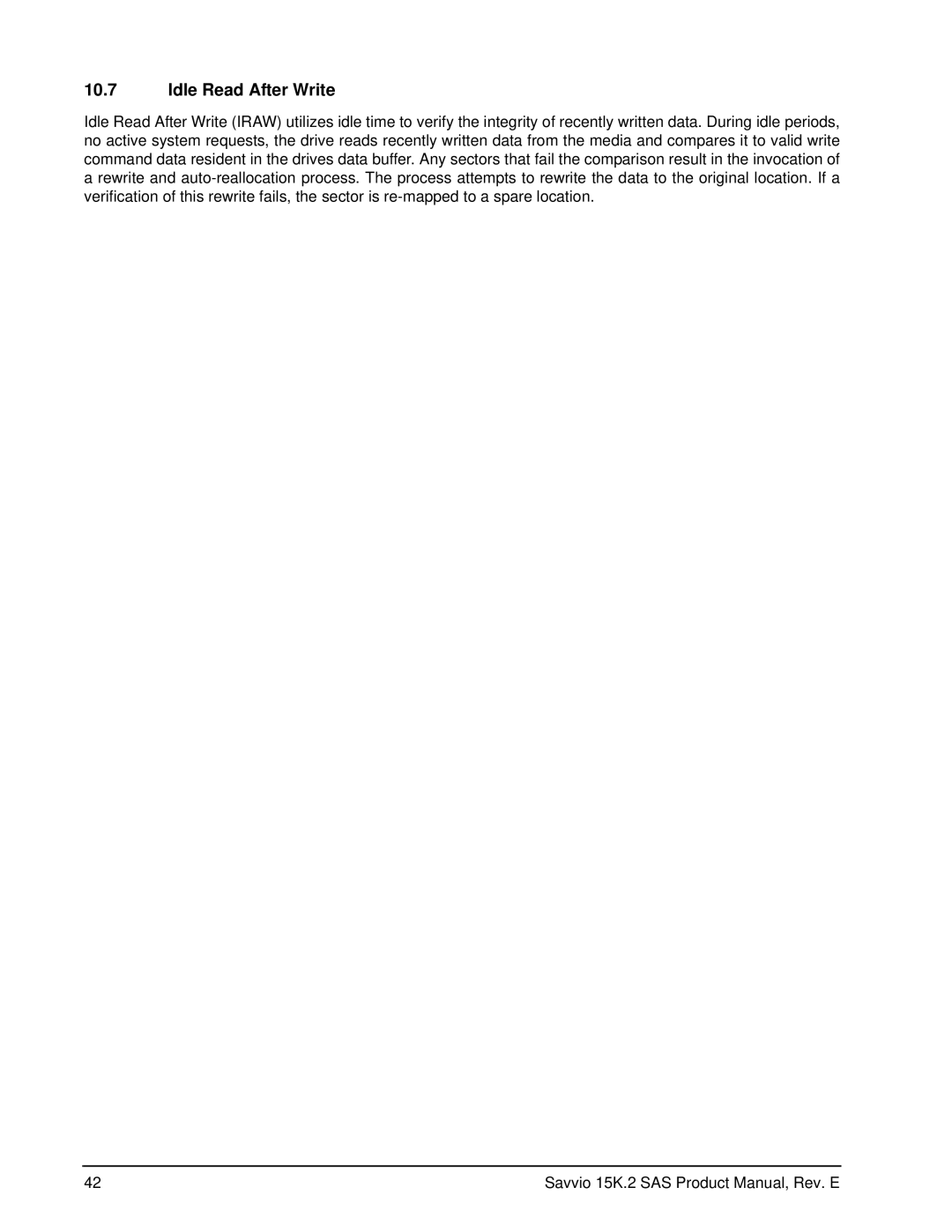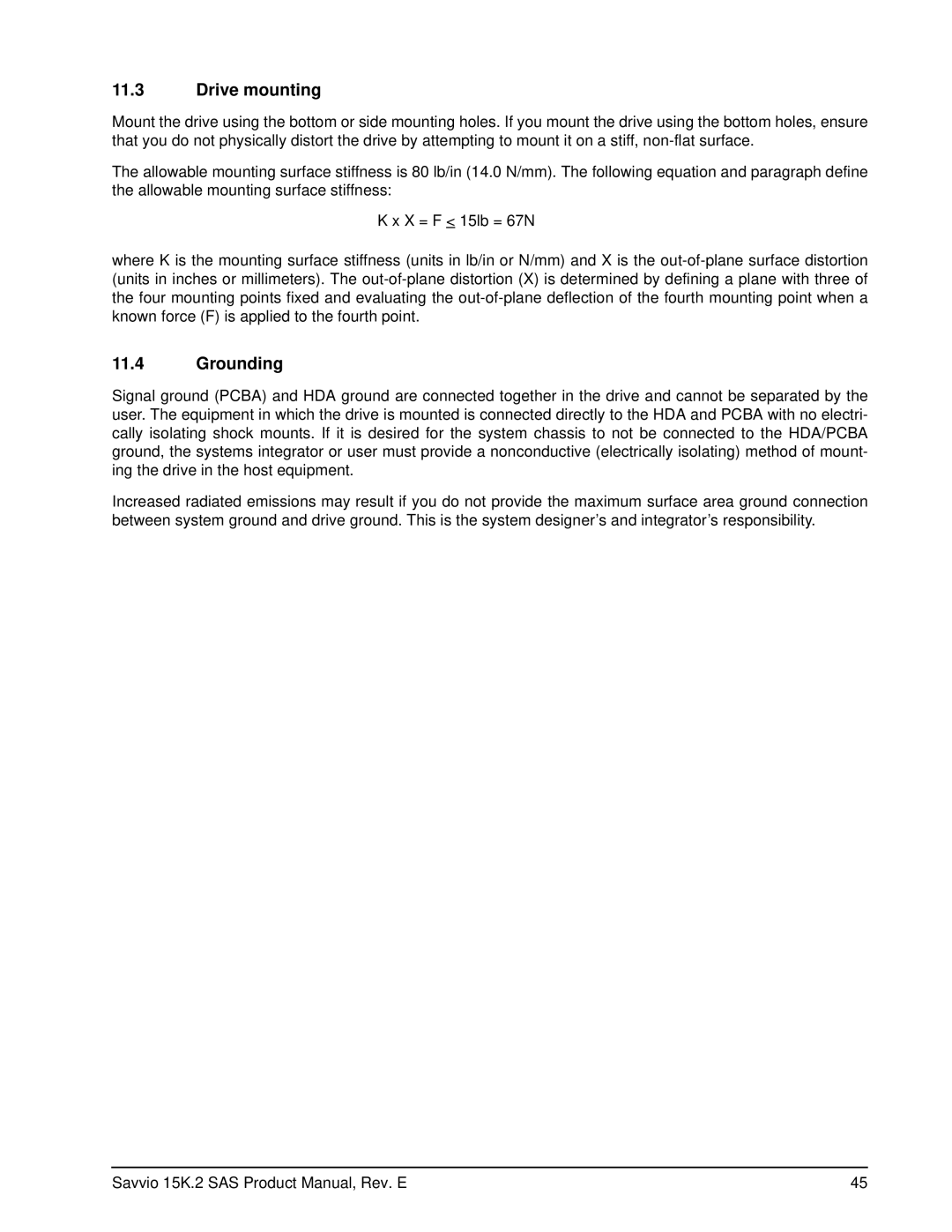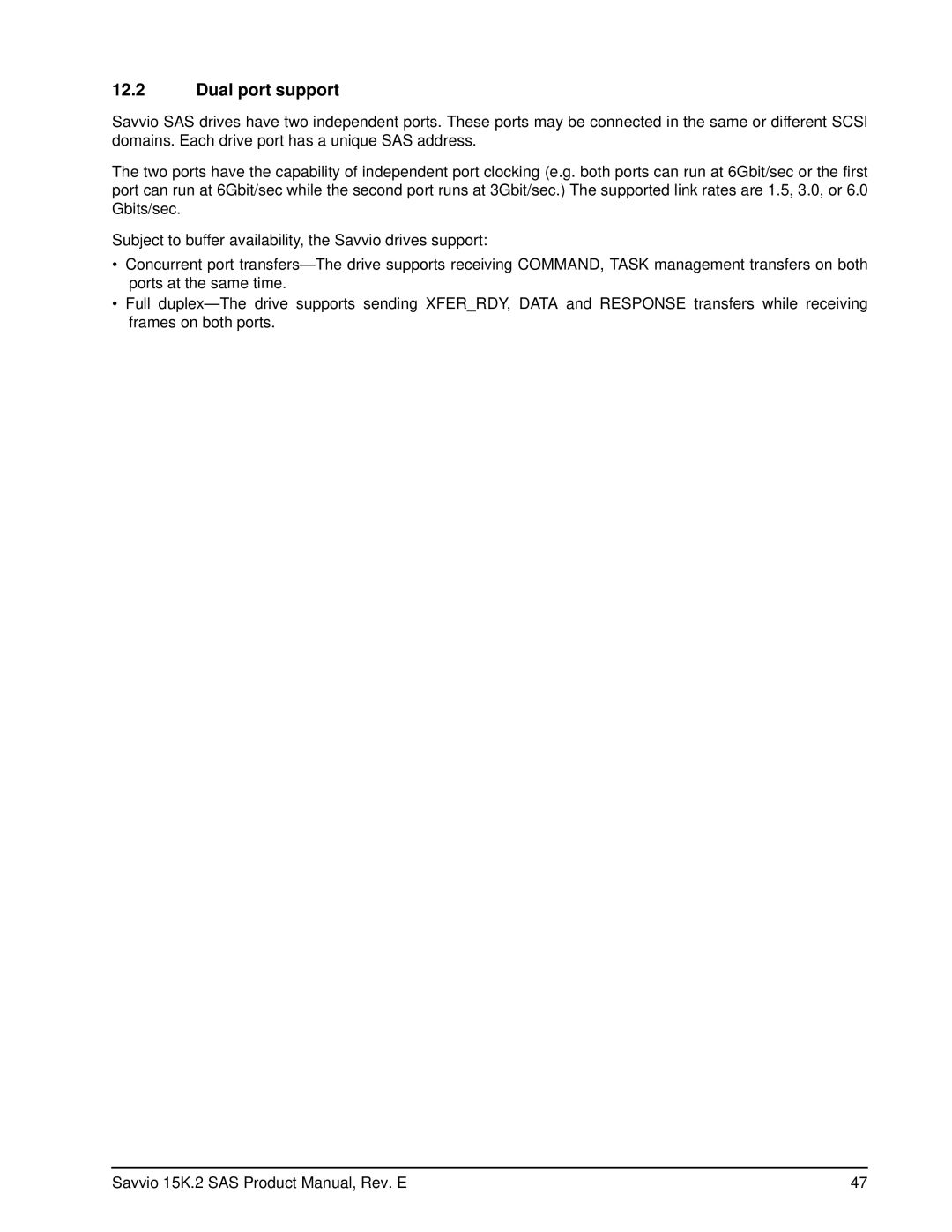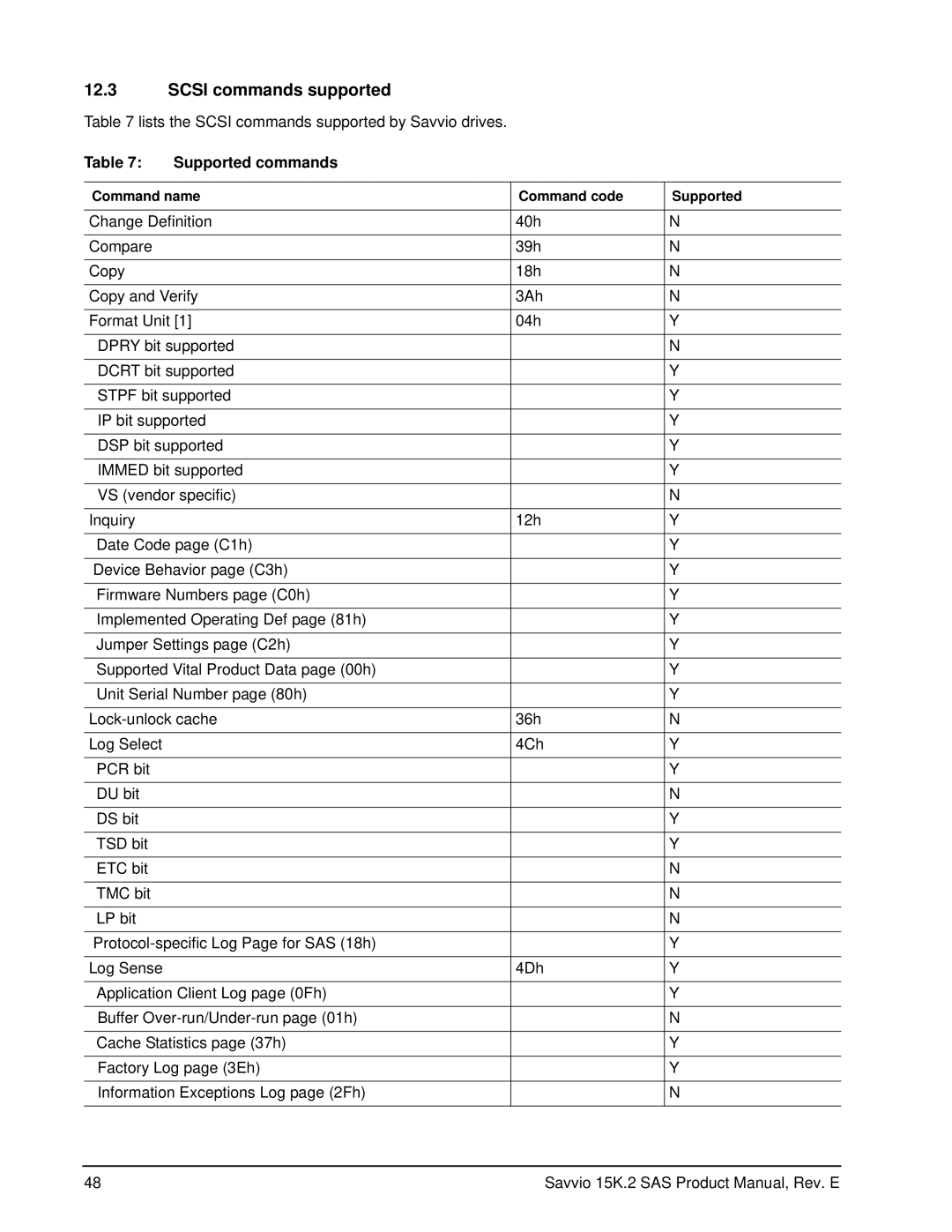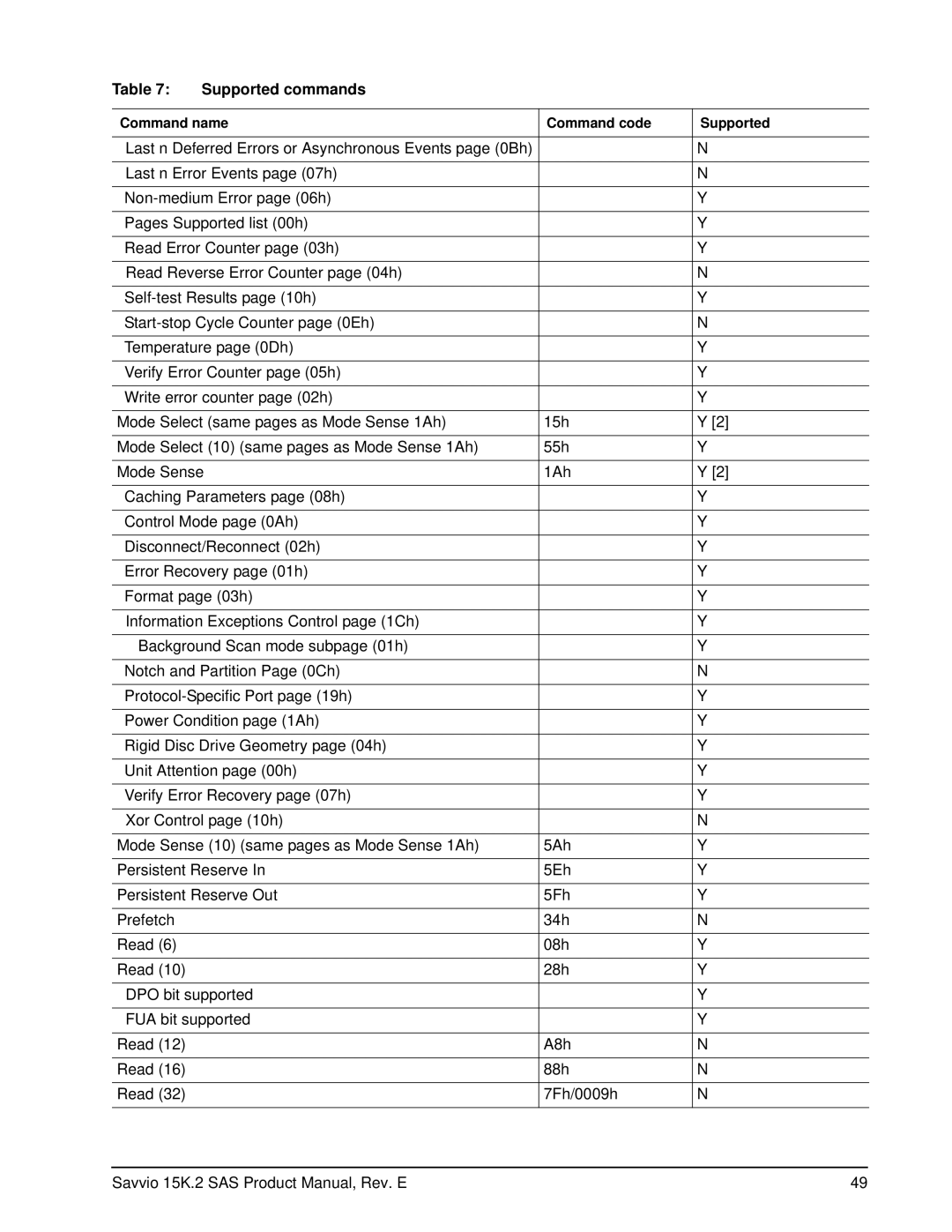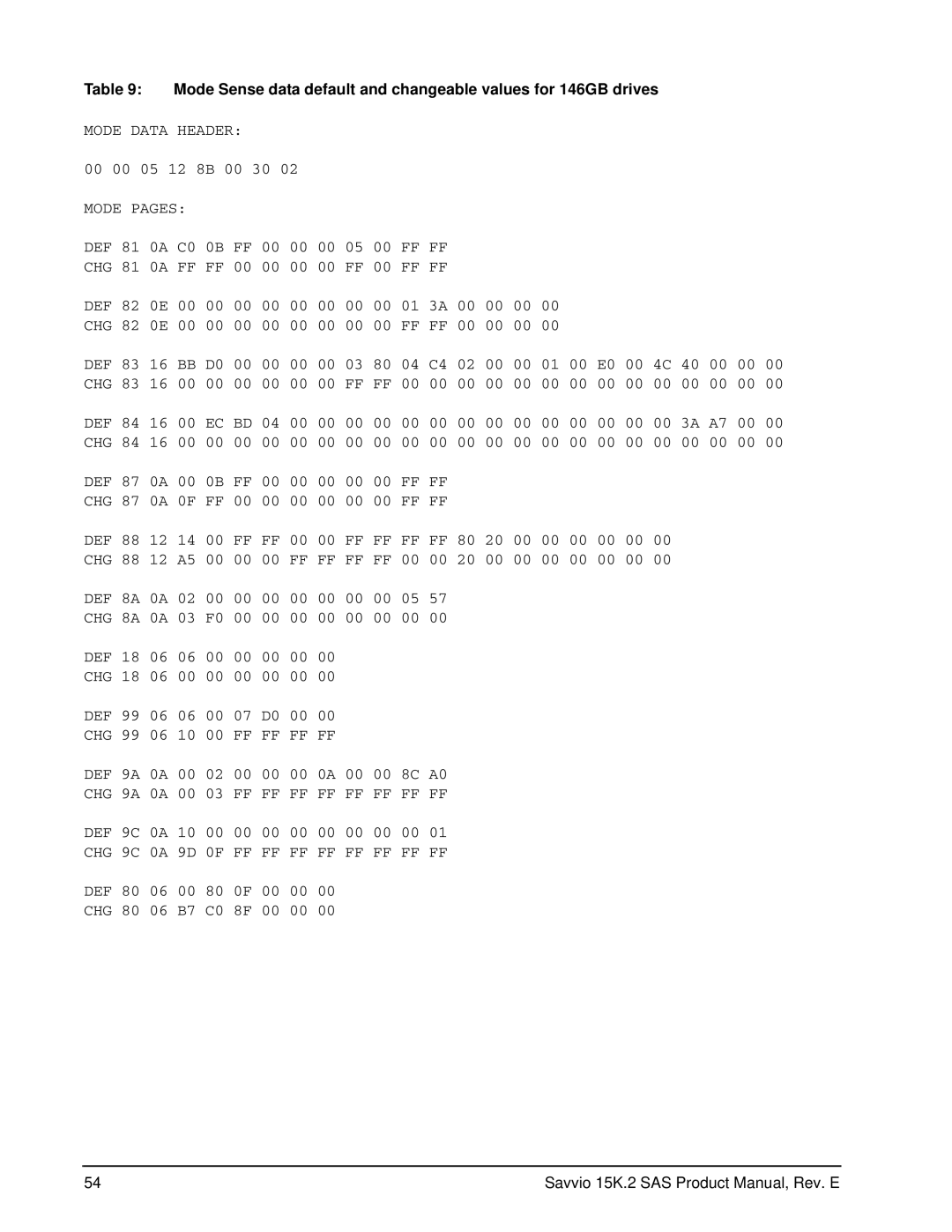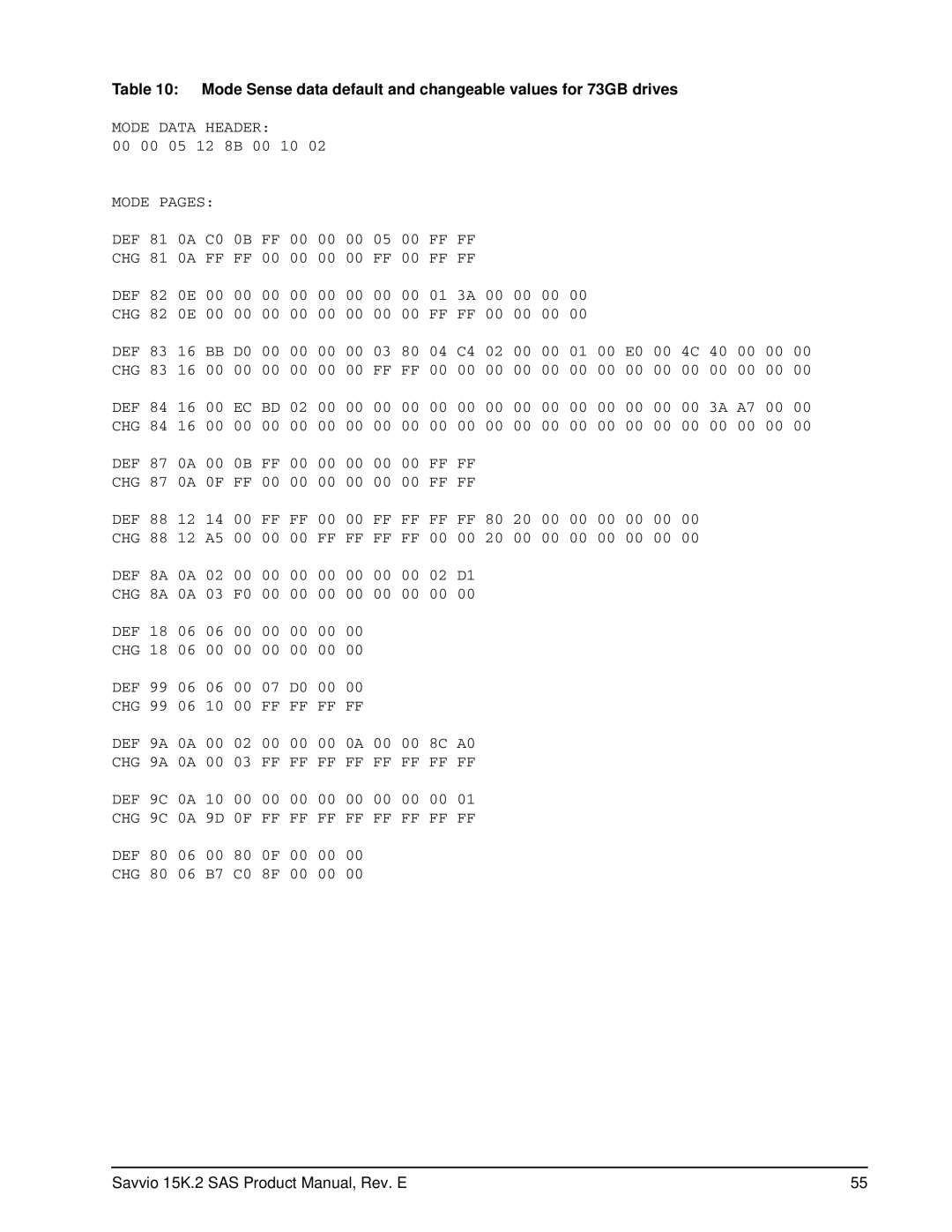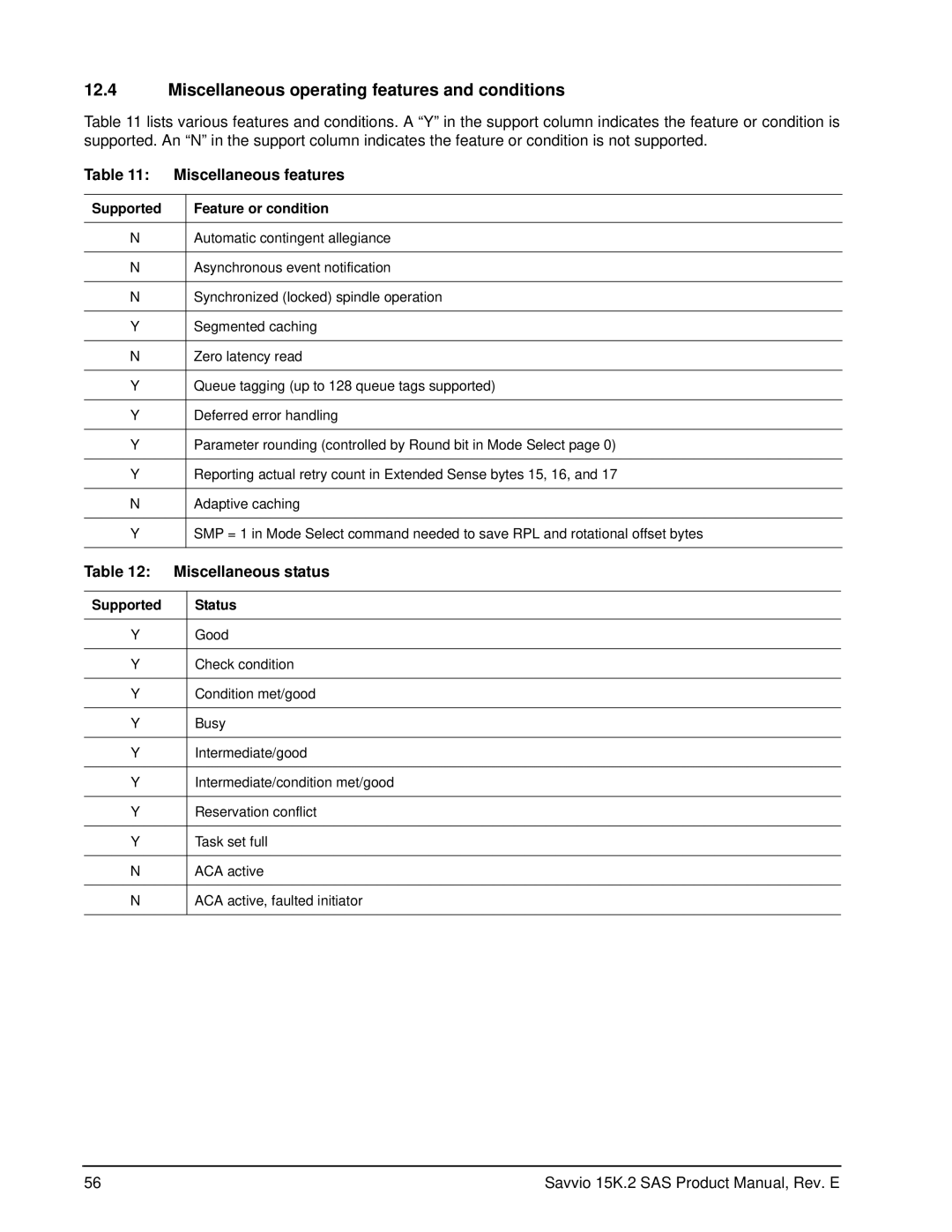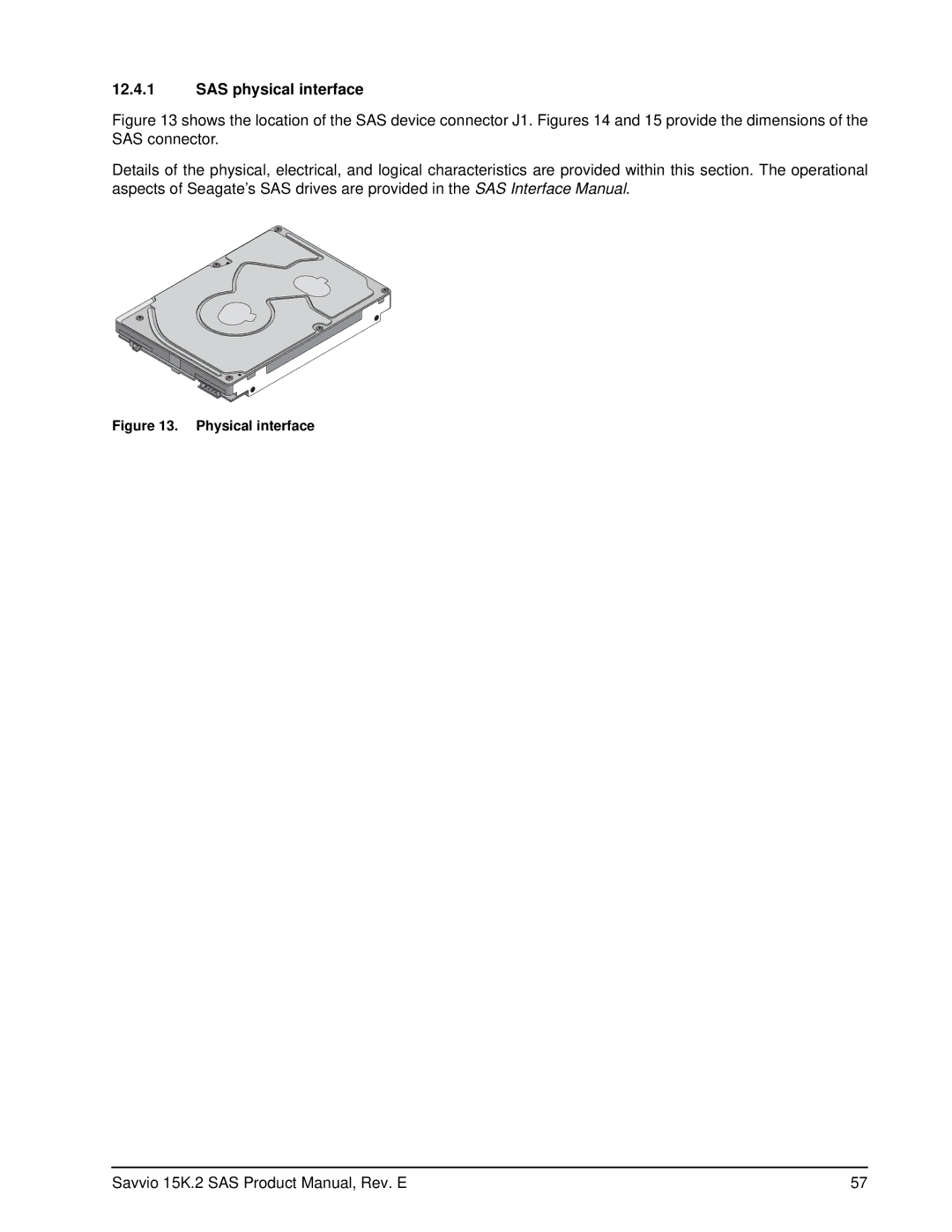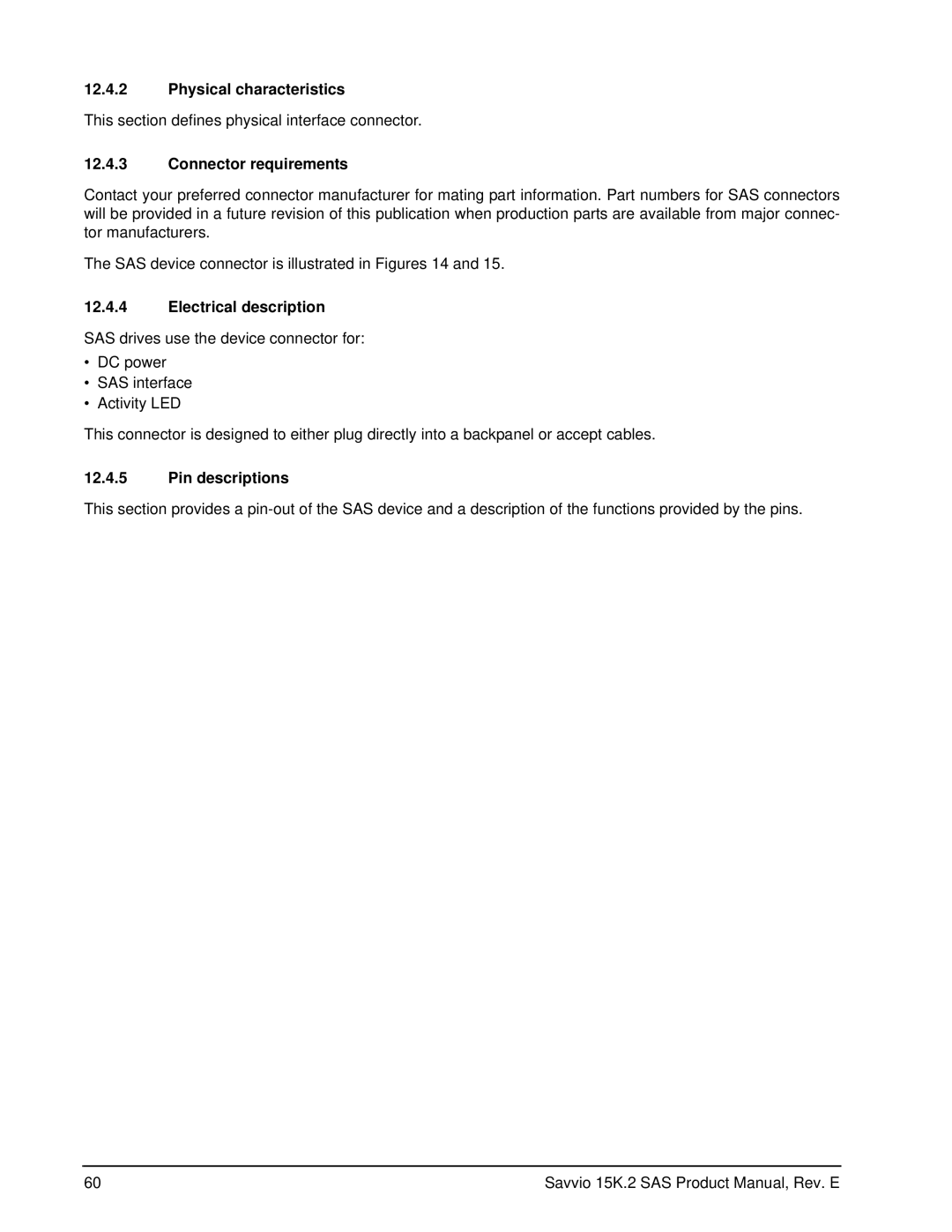9.2.2Locking SP
The Locking SP controls read/write access to the media and the cryptographic erase feature. Access to the Locking SP is available using the BandMasterX or EraseMaster passwords. Since the drive owner can define up to 16 data bands on the drive, each data band has its own password called BandMasterX where X is the number of the data band (0 through 15).
9.2.3Default password
When the drive is shipped from the factory, all passwords are set to the value of MSID. This
9.3Random number generator (RNG)
The drive has a
9.4Drive locking
In addition to changing the passwords, as described in Section 9.2.3, the owner should also set the data access controls for the individual bands.
The variable "LockOnReset" should be set to "PowerCycle" to ensure that the data bands will be locked if power is lost. This scenario occurs if the drive is removed from its cabinet. The drive will not honor any data read or write requests until the bands have been unlocked. This prevents the user data from being accessed without the appropriate credentials when the drive has been removed from its cabinet and installed in another system.
When the drive is shipped from the factory, the firmware download port is locked and the drive will reject any attempt to download new firmware. The drive owner must use the SID credential to unlock the firmware down- load port before firmware updates will be accepted.
9.5Data bands
When shipped from the factory, the drive is configured with a single data band called Band 0 (also known as the Global Data Band) which comprises LBA 0 through LBA max. The host may allocate Band1 by specifying a start LBA and an LBA range. The real estate for this band is taken from the Global Band. An additional 14 Data Bands may be defined in a similar way (Band2 through Band15) but before these bands can be allocated LBA space, they must first be individually enabled using the EraseMaster password.
Data bands cannot overlap but they can be sequential with one band ending at LBA (x) and the next beginning at LBA (x+1).
Each data band has its own
Savvio 15K.2 SAS Product Manual, Rev. E | 37 |
